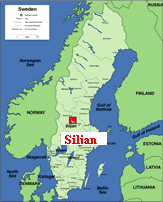石油無機起源説
Jchem News 2005/8/9
台頭する石油の無機起源説、無尽蔵の油・ガス〜状況証拠続出
−有機起源説では説明不能の深部基盤岩内部油田を相次ぎ発見−
定説だった石油の有機起源説に対して、無機起源説を証明する状況証拠が次々に現れてきた。生物由来の有機物が原料ならば有限だが、地球深部(上部マントルや地殻深所)で無機的な反応により炭化水素を形成し続けているのならば、ガスや石油はほとんど無限になるという説。いつの時代も石油埋蔵量や確認可採埋蔵量の評価が話題となるが、無機起源説が事実なら、石油枯渇論や中東など油田の偏在性が見直され、大規模な断裂やプレート境界が集中する日本のような火山国が新たな探鉱対象地域として浮上してくる。
日本経済新聞 2005/11/13
石油は無尽蔵か 「無機説」に脚光 議論なお不十分
ガソリンや灯油の高値に悲鳴を上げている人には朗報? 天然ガスや石油のもとになるメタンガスは地球の奥深くで合成され、無尽蔵にあるかもしれない。そんな仮説が専門家の間でささやかれている。常識破りの「石油無機起源説」を検証する。
文藝春秋編 日本の論点PLUS
2005.07.28
石油資源は無尽蔵?
http://books.bitway.ne.jp/bunshun/ronten/ocn/sample/enquete/050728.html
だが最近、これらの懸念を根底から覆すような説が注目されつつある。「石油無機起源説」と呼ばれるものだ。従来、石油は数億年前の動植物の死骸が堆積して化石化し、地熱と地圧の影響を受けて生成されたと説明されてきた。この化石を多く含む泥岩を根源岩といい、その上に堆積物が厚く累積した堆積盆地と呼ばれる場所で、さらにいくつかの条件が整って初めて、油田が形成される。これが有機起源説である。それに対して無機起源説は、もともと地球深部に大量に存在する炭化水素が、地殻の断裂を通じて地表に向けて上昇し、油田を形成したという。これは19世紀末から存在していた説だが、実際、堆積盆地ではなく、その下にある基盤岩の内部から油田が発見される例が少なからずある。
無機説では、地球内部に膨大な量が存在する炭化水素が地殻の断裂を通じて地表に向かって上昇し、貯留したのが油ガス田と説明される。堆積盆地は土台の基盤岩に断裂が多いために炭化水素が上昇しやすく、油ガス田が形成されやすいというわけだ。
炭化水素の成因については主に「地球創生期にいん石によって取り込まれた」(宇宙起源説)、「地殻より深い、上部マントルで岩石と水が反応して生成される」(マントル起源説)の2説がある。
無機説は1870年代、元素記号の周期律表で知られるロシアの化学者メンデレーエフ氏が唱えたのが始まりで、旧ソ連地域を中心に継承されてきた。1970年代には米コーネル大学名誉教授だった故ゴールド氏の「地球深層ガス説」が注目を集めたが、あくまで少数派だ。
無機説を裏付けるような数々の事実、現象が続出していることがある。その一つが、有機説では探鉱対象になり得ない地点、深さ(5千メートル以上)で相次いで発見された油ガス田の存在だ。堆積盆地を掘り進んだ基盤岩の内部に垂直方向に広がる油田、基盤岩が地表まで盛り上がった「楯状地」で見つかった油田など、いわゆる「基盤岩油田」は世界で450以上も商業化されている。
米国科学アカデミーが04年9月に発表した論文も無機説支持者を勢いづけている。
人工ダイヤモンドで密閉した微少な空間に方解石、ウスタイト、水という地殻に豊富に存在する物質を入れ、上部マントルに相当する高温高圧条件下に置いたところ、容易に油ガスが生成されたという。生物が関与せず、水と岩石の反応だけで生成されることを実証したわけだ。
F.E.R.C Research Report
石油が無くなるって本当ですか?
http://www.ntv.co.jp/FERC/research/20001126/gimon01.html
2000/11/26 報告 報告者:山名 研一
アメリカコーネル大学天文学部のトーマス・ゴールド教授は、「実は石油は生物の死骸からではなく、地球の深部に大量に蓄えられている地球深層ガスが変化して地表まで染み出している物質である。」と語った。物質の想定量を考えると、現在の消費量ならばあと500年分はあると思われる。約46億年前の地球誕生の時、メタンなどの多量な炭化水素物質が地球内部の奥深くに閉じ込められ、それが石油の供給源になっている。
1986年、スウェーデン国家電力委員会は掘削チームを結成し、ダーナラ地方のシルヤン隕石孔の掘削を開始した( Siljan Ring project)。3億6000万年前に巨大な隕石衝突した場所で、地殻の深部まで裂け目が入っている可能性があり、炭化水素も湧き出しやすい。更に、マグマが冷えてできた岩盤なため、生物の堆積物はほとんどない事がわかっているのだ。掘削から1年で地下6000mの地点で石油が発見され、通常の油田がある3000〜
5000mよりも深部に石油があることを裏付けた。この油田発見は、有機成因ではなく地球深層ガスによって石油が作られているという事実を証明している。
http://www.science-frontiers.com/sf079/sf079g10.htm
The
Siljan Ring and T. Gold are back in the news again. A few
years ago, at Gold's instigation, private investors and the
Swedish govenment put up money to drill for oil and gas at
the Siljan Ring, some 200 kilometers northwest of Stockholm.
This granitic region is a meteor-created, shattered scar on
the earth's crust. It is in just such a spot that Gold
expects to find abiogenic petroleum and methane seeping
upward from deep inside the earth, where they have resided
since the earth was formed. Conventional petroleum geologists
have roundly ridiculed the Siljan Ring project; after all,
everyone knows that oil and gas derive from buried organic
matter.
Three
years ago, at a depth of 6.7 kilometers, the
"misguided" Swedish drillers pumped 12 tons of oily
sludge from the granite rock. "Just drilling fluids and
diesel-oil pumped down from the surface," laughed the
experts. This autumn (1991), more oil was struck in a new
hole only 2.8 kilometers deep. This time, only water was used
to lubricate the drill. How are the skeptics going to explain
this? Well, about 20 kilometers away, there are sedimentary
rocks; perhaps the oil seeped into the granite from there.
Rejecting this interpretation, the drillers are going deeper
in hopes of finding primordial methane. (Aldhous, Peter;
"Black Gold Causes a Stir," Nature, 353:593, 199l.
Anonymous; "Black Gold," The Economist, p. 101,
October 19, 1991. Cr. T. Brown)
Explorer 2002/11
Gas
Origin Theories to be Studied
http://www.aapg.org/explorer/2002/11nov/abiogenic.cfm
The
Siljan Ring project in Sweden was supposed to answer a
lot of questions about the origin of hydrocarbons, but not even
the sight of burning "water" ended the mystery. The
research -- and the increasingly intense debate continues.
The debate about cooking up hydrocarbons keeps getting hotter.
Some
scientists insist that all petroleum comes from abiogenic(非生物源の) processes, with
hydrocarbon development occurring in the Earth's mantle.
An
explorationist might dismiss the entire controversy over
petroleum origination, except for two key points:
* Theorists of abiogenic petroleum tend to see hydrocarbons as
not just abundant but super-abundant, with no
possibility of constrained supply.
* Petroleum generated by abiogenic processes could occur
anywhere, so exploration need not be
limited to sedimentary basins, or to depths of only a few miles.
From
Russia, With Love
Various other theories oppose the organic-origin explanation. The
principal counter-theory is often called the abyssal, abiotic Russian-Ukrainian
theory of petroleum.
In
1951, a group of Russian scientists issued a challenge to the
theory of organic petroleum origination. They claimed that
hydrocarbons are produced from inorganic materials, at
upper-mantle to lower-crust depths.
New controversy over that proposal resulted from a paper
published in August 2002 in the Proceedings of the National
Academy of Sciences (U.S.), "The evolution of
multi-component systems at high pressures: IV. The thermodynamic
stability of the hydrogen-carbon system: The genesis of
hydrocarbons and the origin of petroleum."
